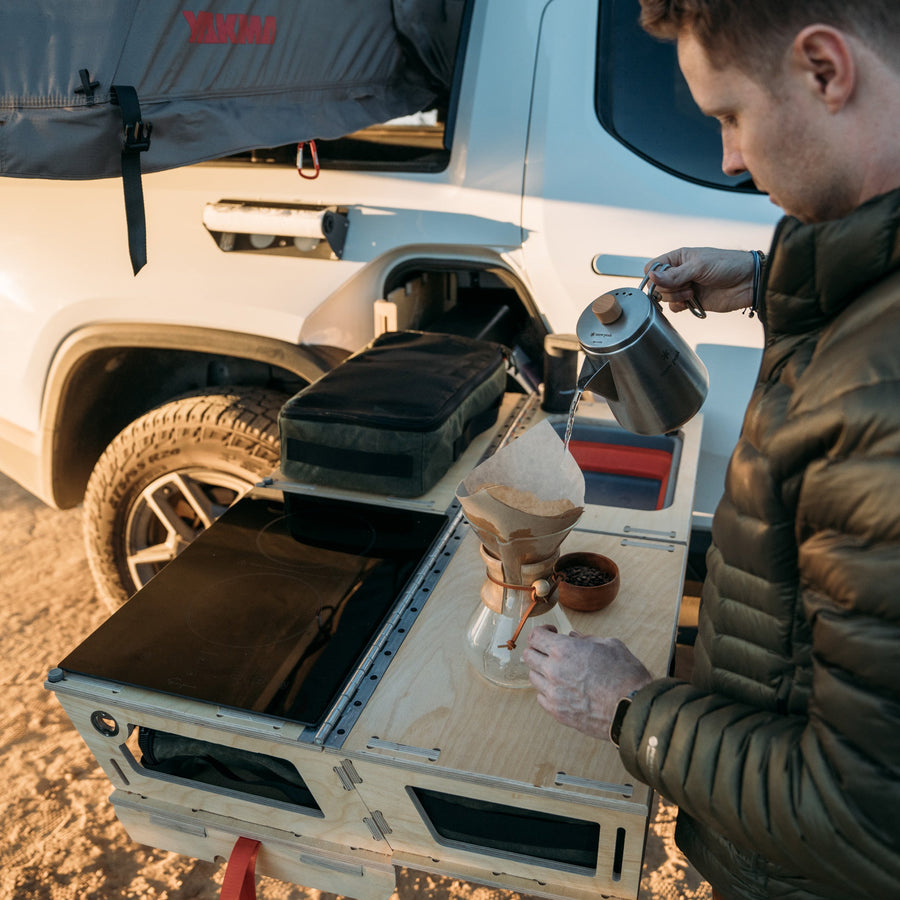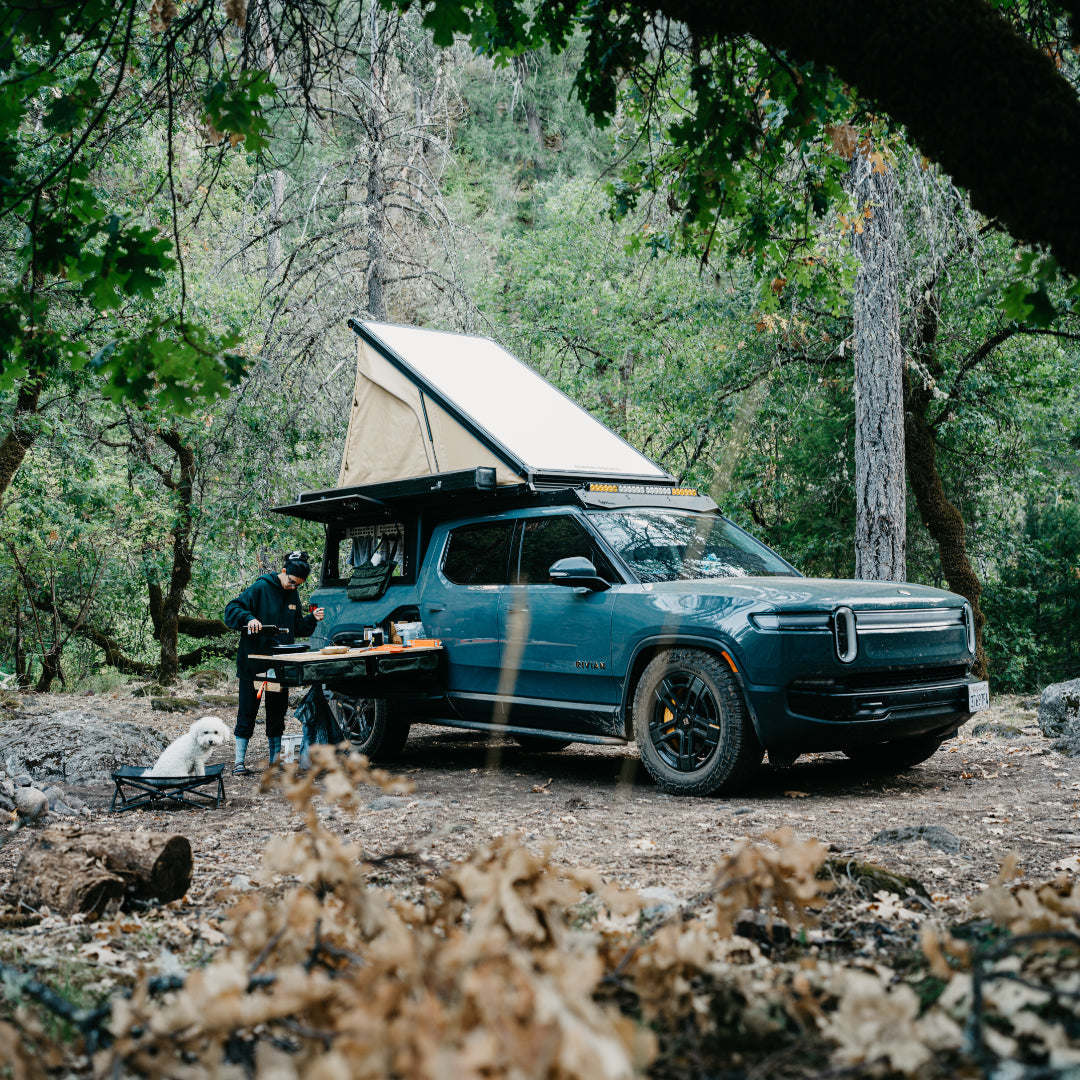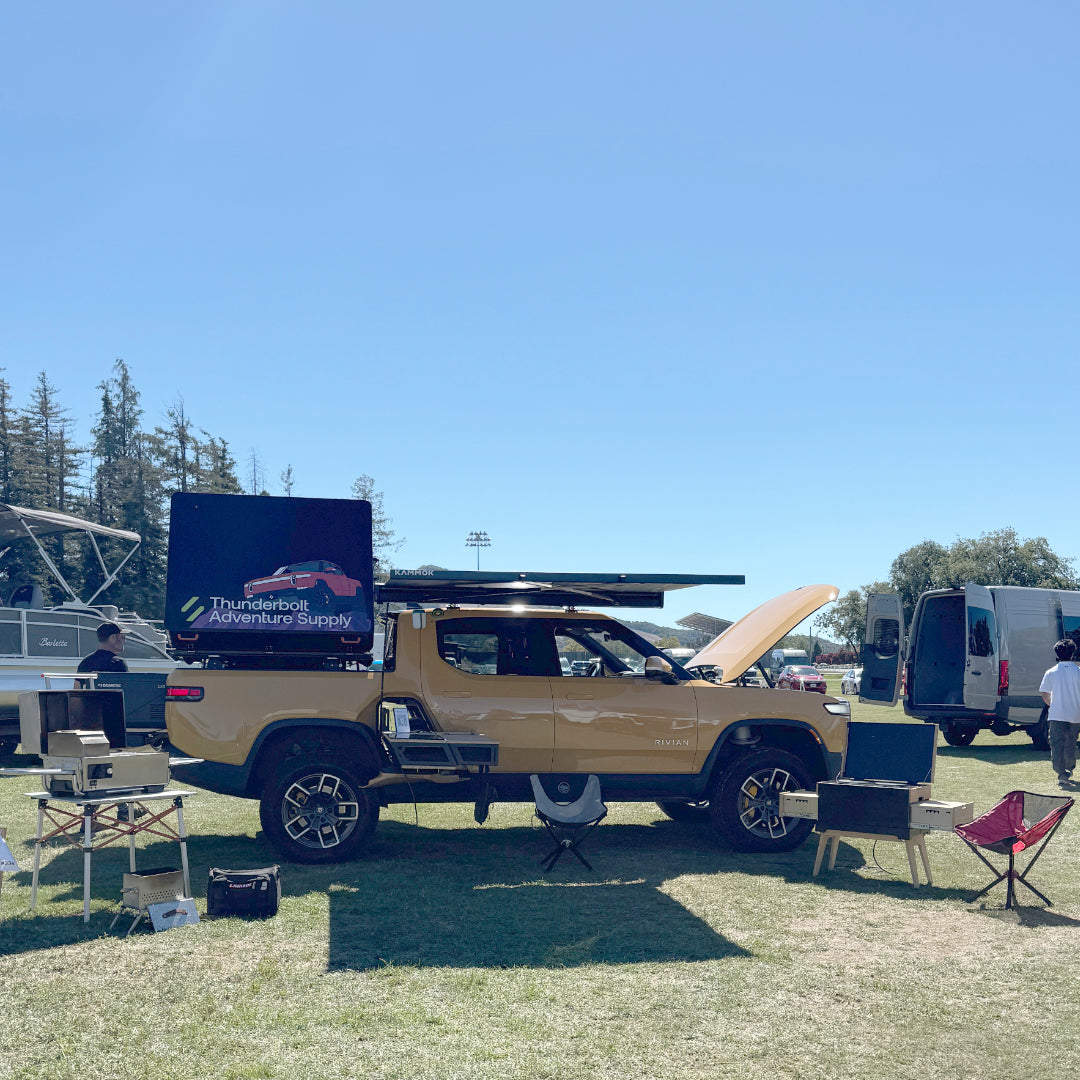Adventures in "Mini Mass Production"

Our products are produced in a way that blends elements of mass production with hands on processes. It's a method that delivers a consistent yet artisan product to you.
Our kitchens for both the R1S and R1T are designed to fit into extremely tight spaces. Not only that, the spaces are a little... peculiar. The Gear Tunnel has the slanted opening that brings to mind square peg/round hole dilemmas. And the space behind the third row of the R1S is snug at best. When designing the respective kitchens we knew we'd have to take advantage of every last cubic inch of space, but that meant squeezing a lot into odd shaped spaces.

How to make sure that each kitchen fit into every truck or SUV? Precision manufacturing was the answer. After a bit of searching, we found a great CNC shop to partner with nearby. Their massive machine make short work of cutting out the parts for our kitchens. But there's more to the process that just a giant bit running on three axes. The folks at Neal's CNC shop helped us refine the design of the kitchens to make assembly more efficient. They also handle the cut layouts to minimize the amount of material needed. They've been great partners!

When it's time to pick up parts for more Camp Kitchens, we put the R1T to work. A full pallet of plywood slides into the bed perfectly and the suspension immediately adjusts to the added weight. It would have been great if Rivian had included a few more anchor points in the truck bed. But with some ingenuity, we get the load secured. The drive across the Bay Bridge back to our workshop in San Francisco is an easy one, and then we can get to work assembling the CNCed parts with everything else that goes in to making the kitchens into ultra functional units.

At this point, if a customer has ordered the flamed version, we also apply the finish. Shou Sugi Ban is a Japanese technique that originated in the 18th century. Originally, Japanese Cedar was charred with a flame and then coated with natural oil. The result was a weather proof material that was also resistant to insects, rot, and ironically fire. We apply the same process to our Baltic Birch marine grade plywood. Matthew uses a standard plumber's torch to burn the surface of the wood to a rich black hue. He then coats the surface with Danish Oil. The result is a silky smooth surface that you can't help run your fingers over.
While we're working on other projects, like the console bag and other future soft goods, the parts are sorted and stored in our workshop. Once we assemble the Gear Sleds and Camp Kitchen Modules for the R1T, we prepare them to either be picked up and installed or shipped to their final destination. It's not quite an assembly line. There is a lot more hands on work to make the product you receive, but it's mini mass production. We hope you enjoy the end result!








